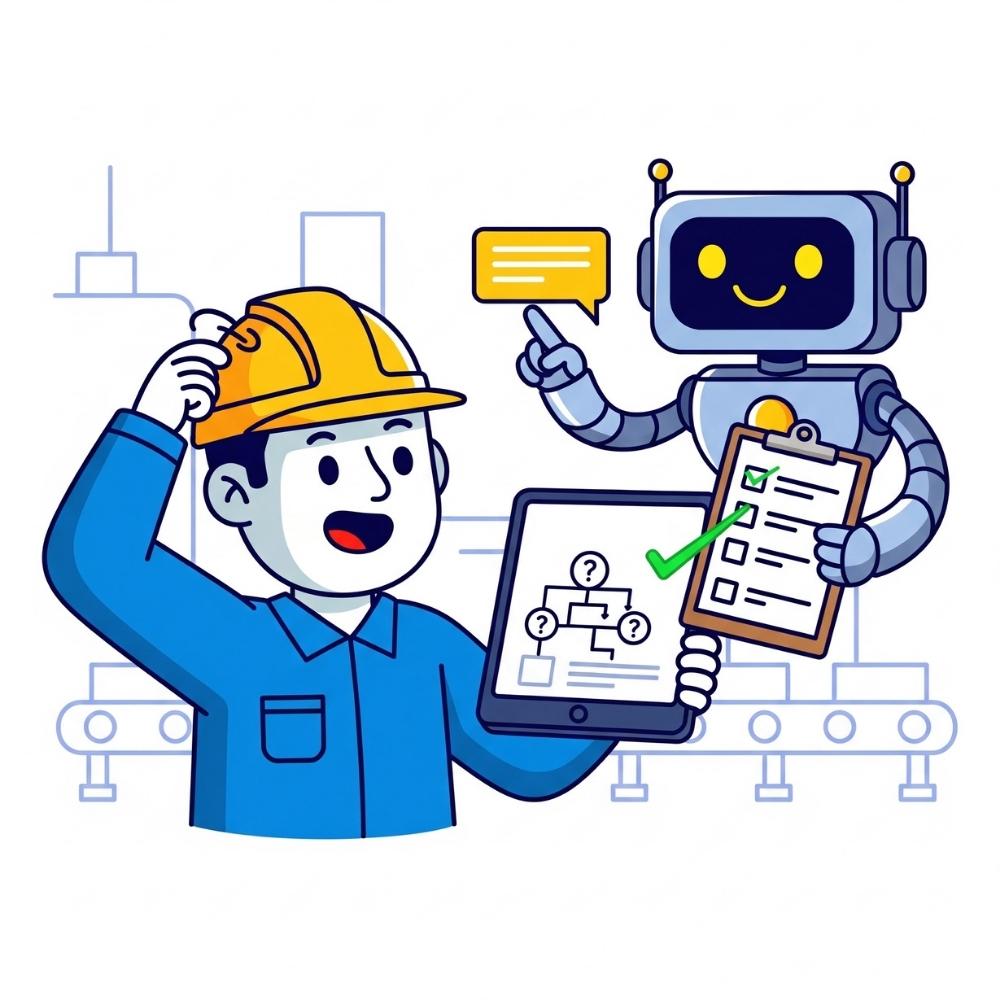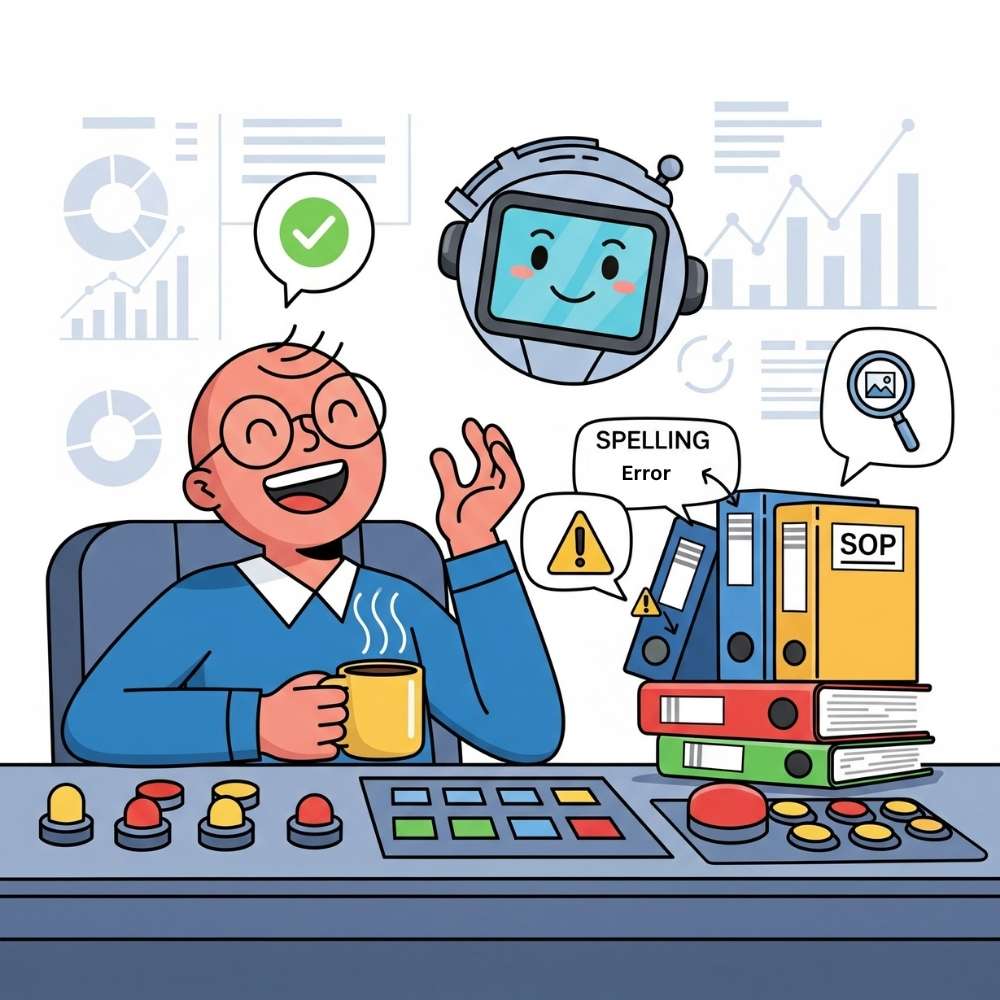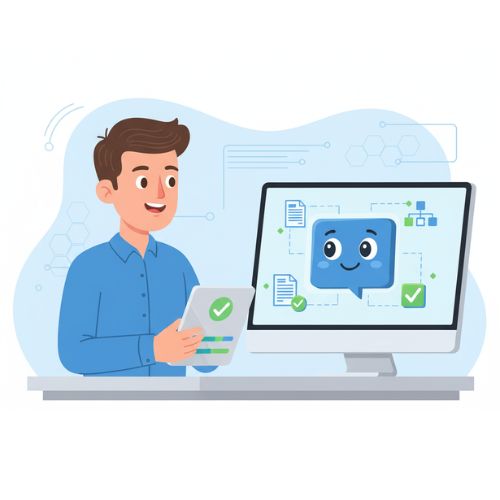AI Alerts in Quality Control: Fixing Flawed Procedures
In quality control, keeping standard operating procedures (SOPs) accurate and up-to-date is key to smooth operations. But spotting errors or outdated details in these documents can be tricky, especially in large organizations. That's where AI-powered chatbots come in. These tools can scan SOPs for issues and notify quality assurance (QA) teams right away, helping fix problems before they cause bigger headaches. At Botable.ai, our chatbots are designed to handle this kind of work, making it more straightforward for teams to maintain high standards.
How Chatbots Spot Issues in SOPs
AI-powered chatbots are transforming how organizations maintain the accuracy of their standard operating procedures (SOPs). Using advanced natural language processing (NLP), these tools analyze documents with precision, identifying issues that might slip past human reviewers. Below, we break down the key ways chatbots detect flaws and explore how employee interactions create a feedback loop to improve SOPs over time.
Creating a Feedback Loop with Employee Interactions
One of the most powerful features of chatbots is their ability to learn from employee interactions, creating a feedback loop that refines SOPs. When employees use a chatbot to access an SOP—say, to clarify a step in a quality control process—their questions and the chatbot’s responses generate valuable data. If multiple employees ask similar questions about a specific SOP section, it may indicate that the section is unclear or incomplete.
For example, imagine a chatbot integrated with Microsoft Teams where workers ask, “What’s the calibration frequency for Machine X?” If the SOP states “calibrate regularly,” but employees repeatedly seek clarification, the chatbot logs these queries. Over time, the system identifies a pattern and flags the section for review, suggesting a revision like “calibrate Machine X every 30 days.” This data-driven approach ensures SOPs evolve based on real-world usage.
The feedback loop works as follows:
- Employee Query: Workers interact with the chatbot, asking for SOP details or reporting issues.
- Data Collection: The chatbot records queries, noting frequency and context.
- Pattern Analysis: AI algorithms analyze chat data to detect recurring questions or confusion.
- Flagging Issues: The chatbot alerts QA teams to problematic SOP sections, often with suggested fixes.
- SOP Revision: QA teams update the SOP, and the chatbot monitors future interactions to confirm clarity.
This process not only fixes flawed procedures but also fosters employee engagement by making SOPs more user-friendly. In a Gallup study, companies with high employee engagement saw 23% higher productivity, underscoring the value of clear, accessible documentation.

Detecting Inconsistencies and Errors
Chatbots scan SOPs for contradictions or unclear instructions that could lead to mistakes. For example, if one section of an SOP instructs employees to use a specific software version but another references an outdated one, the chatbot flags this discrepancy. Similarly, they can identify ambiguous language, such as vague terms like "as needed" without clear criteria.
Beyond text analysis, chatbots cross-reference SOPs with external data sources, like regulatory updates or inventory systems. In a manufacturing context, if an SOP for equipment maintenance mentions a discontinued part, the chatbot could check against current supplier catalogs and flag the issue. This is especially critical in industries like medical device manufacturing, where compliance with standards like ISO 13485 is non-negotiable.
Identifying Outdated or Non-Compliant Content
Regulations and best practices evolve, and SOPs must keep pace. Chatbots are programmed to detect outdated references, such as obsolete compliance requirements or deprecated processes. For instance, if an SOP cites a regulation that was updated in 2024, the chatbot can alert the QA team to revise it. This proactive approach helps avoid costly compliance violations.
Chatbots also ensure alignment with niche quality standards, as discussed in our post on AI for niche quality standards. By maintaining a database of current standards, they provide real-time checks to keep SOPs relevant.
Looking for a smarter way to support your team?
Real-Time Alerts for Immediate Action
When a chatbot detects an issue, it doesn’t wait for a manual review. It sends real-time alerts to QA teams via integrated platforms like Slack or email, including specifics like the SOP section, the flagged problem, and its severity. For instance, a safety-related error might trigger an urgent notification, while a minor typo gets a lower-priority alert. This ensures QA teams can act swiftly, minimizing risks.
By combining error detection with employee feedback, chatbots create a dynamic system for SOP maintenance. They don’t just find problems—they help prevent them by making procedures more transparent and more reliable.

Alerting QA Teams for Quick Corrections
Once an issue is detected, the alerting system kicks in. Chatbots can prioritize alerts based on severity—say, a safety-related flaw gets immediate attention over a minor wording tweak. This setup allows QA teams to focus on what matters most without sifting through every document manually.
In practice, this looks like a notification popping up in a team's dashboard: "Alert: Inconsistency in SOP #45, Section 3. Recommended review." The chatbot might even suggest corrections based on similar, approved procedures. This not only speeds up fixes but also builds a log of changes for audits. For companies dealing with compliance, this ties directly into corrective and preventive actions (CAPA), ensuring everything stays traceable.
Botable's platform integrates these alerts seamlessly, whether you're using it for quality management systems or broader process oversight. It's about giving QA teams the heads-up they need to keep things running without interruptions.
Looking for a smarter way to support your team?
Connecting to Quality Assurance for Ongoing Improvements
These AI alerts don't stop at fixing one-off issues; they feed into larger process improvements in quality assurance. By tracking patterns in flagged errors, chatbots help identify systemic problems. For example, if multiple SOPs have similar outdated references, it might point to a need for better training or updated templates.
This loop of detection, alert, and correction strengthens overall QA efforts. Teams can use the data from chatbot alerts to refine procedures over time, leading to fewer mistakes and more consistent outputs. In the context of Quality 4.0, where data drives decisions, this approach fits perfectly.
For departments focused on quality assurance, implementing such tools can make a real difference. Check out how Botable supports quality assurance teams with features tailored for SOP management and alerts. It's also worth exploring related areas like AI for quality inspection to see the full picture.
AI alerts in quality control offer a practical way to catch and correct flawed procedures in SOPs. By identifying bad info and alerting QA teams, chatbots help maintain accuracy and support continuous improvements. If you're looking to enhance your QA processes, Botable.ai has the tools to get you started.
Answers your employees need, right when they need them
Meet Botable — the AI chatbot that handles everything from simple FAQs to complex, multi-step questions, so your team can focus on what matters. Built for HR, QA, and beyond.
Continue reading
Ready to see what Botable can do for you?
Book your demo now to see how Botable can transform your workplace.
Identify your unique challenges
Flexible pricing options
Easy integrations
Step-by-step implementation plan
Customize Botable for your workflow
Book a demo
.webp)









